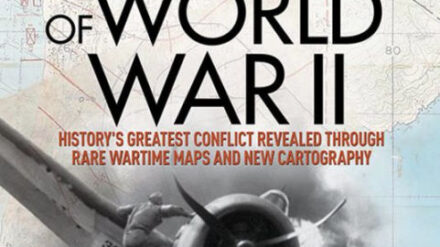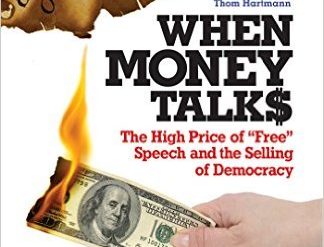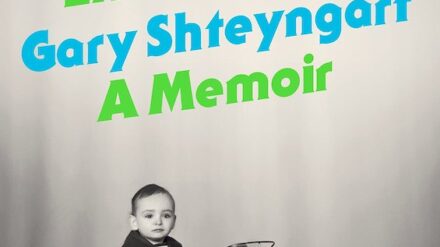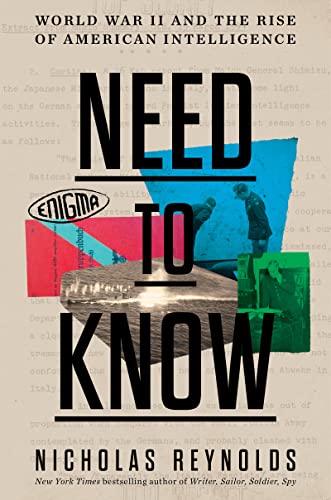
Estimated reading time: 7 minutes
World War II began for the United States with a catastrophic intelligence failure at Pearl Harbor. Two decades earlier, during the First World War, the US military had begun building capacity in signals and communications intelligence. But little was left in place by 1941. Yet, just four years later, tens of thousands of Americans were working round the clock in Army, Navy, State Department, and FBI intelligence units and the Office of Strategic Services. Author Nicholas Reynolds tells the story of how this all came about in Need to Know, an eye-opening account of the rise of American intelligence.
A standout in a flood of books
Of course, there has been a deluge of books about espionage in World War II. However, as Reynolds notes in his introduction, “even among all the books, it is rare to find a ‘crossover’—a book that tackles more than one kind of intelligence or agency, asking how each relates to the other and what, together or separately, each contributed to victory.” And that is the author’s mission here.
In Need to Know, Reynolds offers us “a look at the main threads of American intelligence in World War II and how they were developed, particularly how they related to each other, and where they were positioned at the end of the war.” Elsewhere, you might read of the conflict between the OSS and the FBI, the tense Anglo-American partnership, and the rivalry between the Army and the Navy. But the story is much more complicated than that, as Reynolds so ably shows.
Need to Know: World War II and the Rise of American Intelligence by Nicholas Reynolds (2022) 512 pages ★★★★★
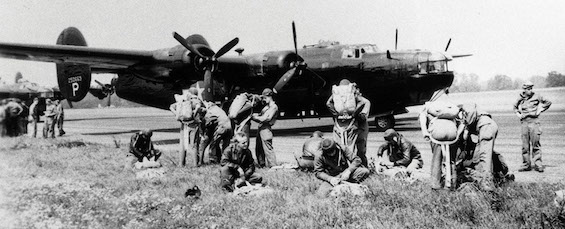
Codebreaking in the rise of American intelligence
As Max Hastings and others have noted, breakthroughs in cryptography made a significant—that is to say, strategic—contribution to the Allied victory. This contribution far outstripped that of conventional human espionage (HUMINT) and special operations behind enemy lines conducted by partisans, Britain’s Special Operations Executive (SOE), and the American OSS. For example, breaking the German Enigma and Japanese military codes made victory possible both in the Battle of the Atlantic and at Midway. But it’s easy to exaggerate the work of the codebreakers, too. “Most of the intelligence for Overlord,” Reynolds notes, “came from other sources—up to 80 percent from aerial photo reconnaissance. Next in very rough order were reports from the French Resistance . . . followed by signals intelligence and captured German documents.”
Although Reynolds doesn’t explicitly compare the value of signals and communications intelligence (SIGINT and COMINT) with HUMINT and special operations, reading through the lines of his book makes the point clear enough. And he does devote a great deal of time and detail to discuss the work of Army and Navy codebreakers (and of the bitter and sometimes crippling rivalry between the services).
Many popular accounts of American intelligence in World War II emphasize the work of the OSS. But Director William “Wild Bill” Donovan’s superiors quickly squashed his early efforts to venture into signals intelligence. And he didn’t see the agency’s primary mission as intelligence-gathering. Donovan, a Medal of Honor winner in World War I, was a frustrated soldier who was unhappy to have been denied a command leading troops. He was interested above all in OSS special operations.
About the OSS
Innumerable books, both novels and nonfiction, have focused the American public’s attention on the Central Intelligence Agency and its wartime origins in the Office of Strategic Services. But those origins were complex, and the link between the OSS and the CIA was tenuous.
For example, many sources give the impression that FDR established the OSS in 1942 and named Donovan as its director as a result of his close friendship with him. But the two were not close. FDR was wary of Donovan, who was a Republican. And he put the newly named director on a short leash, placing him under the command of the Joint Chiefs of Staff (rather than the White House) and shunting off into other agencies much of the work that Donovan saw as vital to his mission.
Throughout the war, in ongoing battles with the FBI, Army and Navy intelligence, and the State Department, Donovan struggled to maintain the OSS’s independence. And as many readers are fully aware, the OSS was dissolved in September 1945 after just three years in existence and the CIA established only in September 1947 following two years of back-and-forth turf wars, Congressional hearings, and debates within the Truman Administration. And Donovan himself played no part in the new agency.
With all that said, Reynolds’ final verdict on William Donovan is unequivocal: “He formed the first American central intelligence agency out of nothing and sent it into battle. That alone has secured his place in history.”
About the author
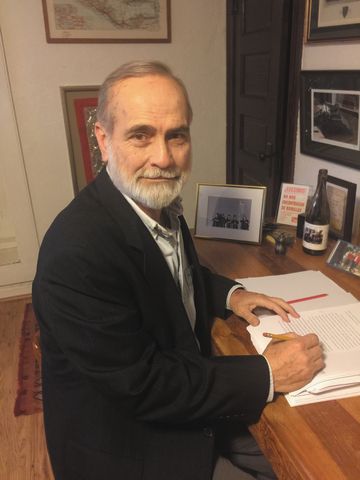
Nicholas Reynolds‘ biography on his author website reads as follows: “Nicholas Reynolds has worked in the field of modern history off and on for 40 years, with some unusual detours. Freshly minted PhD from Oxford University in hand, he joined the Marine Corps in the 1970s, serving as an infantry officer and then as an official historian. As a colonel in the Reserves, he was Officer in Charge of Field History, deploying historians around the world to capture history as it was being made.
“For many years, he worked at CIA, most recently as the historian for the CIA Museum, where he drafted the strategic plan for the next decade and wrote a foundational monograph as well as shorter pieces and many labels. He still believes he has held the best two niche jobs in the US Government.
“Leveraging his experience, he has taught at the Naval War College, Johns Hopkins University, and the Osher Lifelong Learning Institute. He has also tried his hand at farming, writing a novel, and mountain climbing. One of his proudest moments was making it to the glaciated peak of Mt. Baker in the Cascades at the age of 64. With his wife, the gifted healer Becky, he cares for rescue pugs and lives within commuting distance of the Library of Congress, where he can be found on a rainy day.”
For related reading
This is one of the 10 top WWII books about espionage.
Several books contain information directly relevant to the story in Need to Know:
- Agents of Influence: A British Campaign, a Canadian Spy, and the Secret Plot to Bring America into World War II by Henry Hemming (British interference in American politics in WWII)
- The Dirty Tricks Department: Stanley Lovell, the OSS, and the Masterminds of World War II Secret Warfare by John Lisle (How the OSS waged secret warfare in World War II)
- Wild Bill Donovan: The Spymaster Who Created the OSS and Modern American Espionage by Douglas Waller (The remarkable spymaster who launched the US into espionage)
- The Brothers: John Foster Dulles, Allen Dulles, and Their Secret World War by Stephen Kinzer (They shaped US foreign policy for decades to come)
- The Devil’s Chessboard: Allen Dulles, the CIA, and the Rise of America’s Secret Government by David Talbot (When America’s secret government ran amok)
- The Secret War: Spies, Ciphers, and Guerrillas, 1939-1945 by Max Hastings—A revisionist history of intelligence in World War II
You might also enjoy:
- 30 good nonfiction books about espionage
- 10 top nonfiction books about World War II
- Books about World War II in the Pacific
- 7 common misconceptions about World War II
- The 10 most consequential events of World War II
- Top 20 popular books for understanding American history
And you can always find my most popular reviews, and the most recent ones, on the Home Page.

